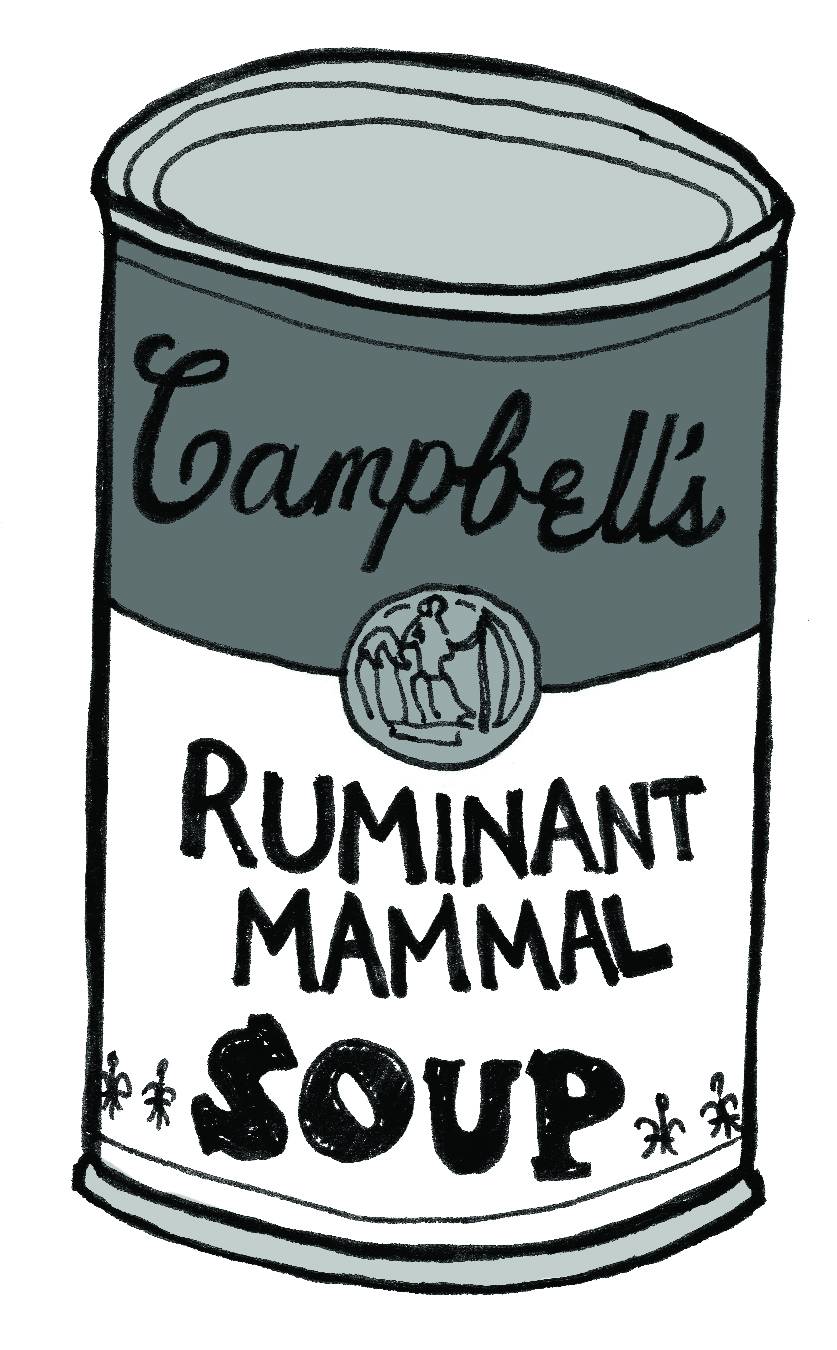I still remember the last meat I ate. It was a caesar wrap from Macca’s, the crispy deep fried chicken in perfect harmony with its attendant bacon. But it left a bad feeling in my stomach, and it wasn’t just queasiness from eating greasy food. I had developed, over the months of being weaned off dinnertime meat by a vegetarian sister, a deep discomfort with eating animals. That day, I tentatively resolved to stop eating meat, and I’m proud to say I’ve only mourned the loss of bacon a couple of times since.
Starting out on my self-imposed bacon-exile, my understanding of a vegetarian diet’s requirements read simply ‘no meat.’ I knew about gelatine (bits of animal jelly that is somehow in so many things), and scouted out a gelatine-free sour cream, but that was pretty much it. It was only recently when I came across a post on Tumblr about rennet that I started to realise how often meat was hidden in processed foods, cosmetics and medicine. Aside from clearly stated meat-origin ingredients like gelatine and rennet, many hide behind vague or unintelligible descriptors like ‘enzyme’ and ‘additive E-120.’ My experience of food labelling is that it’s so inconsistent that it’s often impossible to find out if foods, even ones calling themselves vegetarian, actually are.
This really pisses me off. I’ve been unknowingly eating things containing meat-derived ingredients this whole time I’ve made a conscious effort to avoid doing so (although I admit my resolve always weakens in the face of sweet, juicy, gelatinous gummy bears).
Take the headache that is rennet, for example. Rennet is an enzyme, according to Wikipedia, ‘produced in stomachs of ruminant mammals which is used in the production of most cheeses.’ Okay, I don’t know what a ruminant mammal is, but I’m guessing something cow-like with lots of stomachs. In the case of cow-cheese production, rennet is sourced from the stomach of baby calves and is a by-product of the veal industry. So it’s definitely not vegetarian. But vegetarian ways of producing this kind of enzyme do exist. Here’s that problem again: ambiguous and inconsistent labelling. On inspection of cheese ingredient lists, you’re likely to find some that simply say ‘enzyme’ (sooo helpful!), others that are slightly more specific that say ‘enzyme: rennet’ (thanks, but what kind?), and if you’re really lucky you’ll find a ‘non-animal rennet’ or ‘microbial rennet’ listed in there somewhere.
It’s annoying to scan every cheese label in the shop to find one that I can eat, but rennet goes further than that, because of course cheese is an ingredient in lots of other things. The ‘Vegetarian Cheese Wrap’ I found at Hackett the other day lists ‘enzyme’ in its cheese-ingredient breakdown, so you can see why I have serious trust issues. How many times am I being lied to by companies that don’t know what they’re talking about? How many people don’t realise you can’t just leave the meat out of something and slap a ‘vegetarian’ label on it?
I think the solution to the ignorance and lack of transparency surrounding meat-derived ingredients is clearer food labelling. Right there next to the food allergy warnings it could say something like ‘contains no animal products’/’contains animal products’/’contains meat products.’ India, for example, has a system where vegetarian food is identified by a green dot and meat by a brown one. It’s a little different though, because India’s system includes eggs in the meat category due to religious definitions (unlike the common ‘no meat but still eggs and milk’ definition used in Australia), and the proportion of vegetarians and vegans in Australia is so much lower than in India. So why should you care about vegetarian food labelling if you’re part of the meat-eating majority in Australia?
In 2009, an application to Food Standards Australia New Zealand called for ‘suitable for vegetarians’ and ‘suitable for vegans’ labelling on relevant food. It was rejected because the presence of meat-derived ingredients isn’t a public health and safety issue. But knocking applications like this one back has a direct impact on our ability to make informed decisions. It’s not fair if vital information about what we eat is withheld from us just because those in charge of our food labelling laws think only our safety matters, not our agency. Australia prides itself on the ideology of freedom of choice, so food labelling needs to be transparent enough to allow all of us to make our own informed choices about what we eat. You only have to look as far as the recent push towards country-of-origin labelling to see a desire for consumer consciousness. Let’s add meat products to the list of things we’d like to be aware of in our food.
Words by Miriam Crandell

